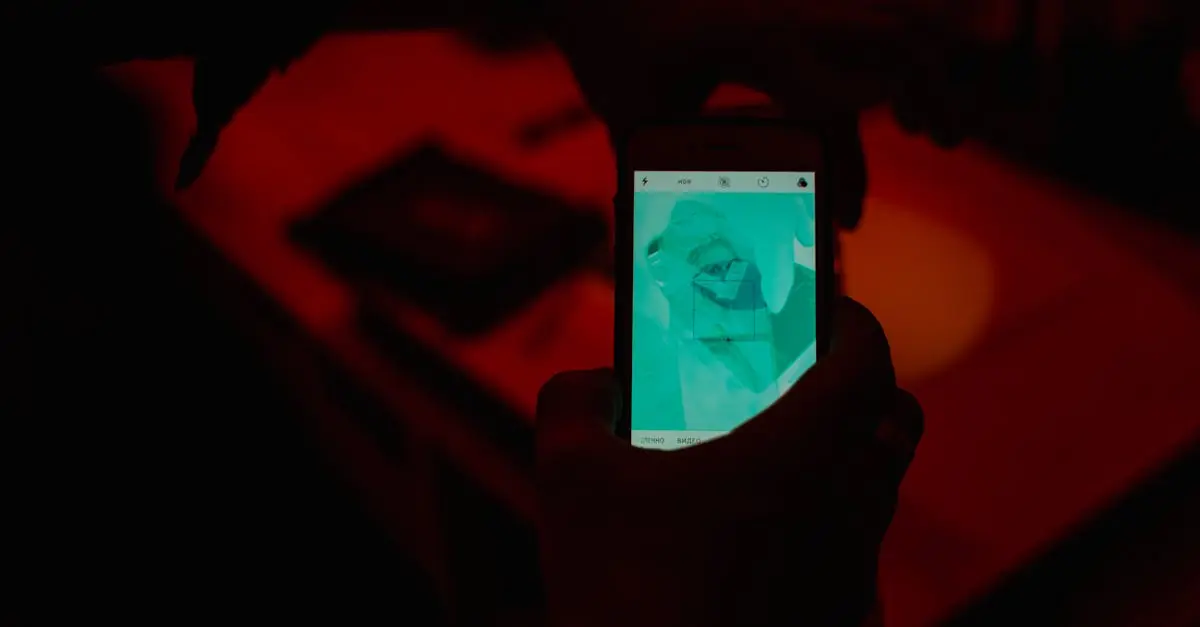Table of Contents
ToggleIn a world overflowing with images, sometimes you just need to know where that picture came from. Whether it’s a mysterious cat meme or a stunning sunset, reverse image searching on an iPhone can unlock a treasure trove of information. Imagine impressing your friends with your newfound detective skills as you trace the origins of their favorite viral pics.
Understanding Reverse Image Search
Reverse image search allows users to find the source of an image. This process helps identify the origins of various pictures including memes, stock photos, and artwork. By utilizing this tool, individuals can uncover valuable information about the images they encounter.
Many applications and websites offer reverse image search capabilities. Google Images stands out as a popular option, providing extensive results. Uploading an image or pasting a URL directly into the search bar generates relevant search results quickly.
Another method involves using dedicated applications specifically designed for image recognition. For instance, apps like TinEye and Image Search utilize advanced algorithms. These tools help users find visually similar images while offering insights into their history.
Additionally, reverse image search can assist in verifying the authenticity of images. Identifying altered or misattributed content promotes trust in online information. Fact-checking becomes easier, especially when dealing with news articles or viral posts.
Various scenarios benefit from reverse image searches. Researchers utilize this feature to source images for academic purposes. Marketers appreciate the ability to track brand usage across social media platforms. Artists often search for unauthorized use of their work, protecting their intellectual property.
Understanding the capabilities of reverse image search enhances one’s ability to navigate visual content effectively. Utilizing different tools and methodologies empowers users to extract detailed information about images. Engaging with this knowledge enriches conversations and piques interest in diverse subjects.
Methods To Reverse Image On iPhone
Users can effectively reverse image search on an iPhone using various applications and websites. Here are two popular methods.
Using Google Images
Google Images allows quick reverse searches. To begin, open Safari or any web browser on the iPhone. Navigate to the Google Images website. Tap the camera icon located in the search bar. Users can upload an image directly from their device or paste an image URL. After submitting, Google displays visually similar images and relevant information. This method provides instant access to the origins of the image, along with similar visuals and websites hosting the image.
Using TinEye
TinEye serves as another excellent option for reverse image searching. Start by launching Safari or another browser on the iPhone. Visit TinEye’s website and tap the upload image option. Users can choose an image from their camera roll or input a specific URL. Upon processing the image, TinEye reveals where it appears across the web, along with variations. This service focuses on image tracking, helping users uncover copyright information or find higher-resolution versions. It proves particularly useful for identifying artwork and checking usage rights.
Third-Party Apps For Image Search
Various third-party apps enhance reverse image search capabilities on an iPhone. These apps provide users with alternatives to traditional search methods, making image identification easier and more efficient.
Popular Apps Overview
TinEye, Reverse Image Search, and Google Lens are popular options for reverse image searches. TinEye excels at identifying image origins and tracking copyright issues. Reverse Image Search offers a user-friendly interface for discovering similar images online. Google Lens combines reverse image searching with powerful image recognition features, making it a versatile choice for everyday use.
How To Use These Apps
Using these apps starts with downloading them from the App Store. After installation, open the selected app and follow these steps: for TinEye, tap the upload icon to choose an image from the library. In Reverse Image Search, either paste a URL or upload an image directly. When using Google Lens, select an image from the library, then tap the Lens icon for information. Each app provides options for refining search results or exploring related images effortlessly.
Tips For Effective Image Searching
Utilizing relevant keywords during an image search enhances results. Keywords should be specific and descriptive, focusing on details that stand out in the image. Combining these keywords with phrases like “similar images” can yield better outcomes.
Exploring multiple reverse image search tools is beneficial. Different platforms may provide unique features, such as image size filters or specific content types. Using tools like Google Images and TinEye, along with dedicated apps, can broaden the search scope.
Analyzing results meticulously often leads to discovering hidden details. Scanning through visually similar images might reveal different contexts or sources. This practice is especially important for verifying image authenticity.
Paying attention to usage rights can help avoid copyright issues. Making sure to filter results by usage rights allows for legal compliance, particularly when utilizing images for projects or presentations. Licensing information found in the search results provides clarity on how an image can be used.
Adjusting image orientation may improve search results. If an image features unique elements or colors, rotating or cropping it might enhance recognition by the search engine. This simple tweak sometimes reveals more matching images.
Maintaining a well-organized image library supports efficient searching. Regularly categorizing and labeling images can assist in quickly identifying specific visuals when needed. Creating folders or albums based on themes streamlines the process.
Exploring community forums or Q&A websites can provide additional insights. Engaging with other users who have similar interests may uncover tips or lesser-known tools. Sharing reverse image search experiences often leads to discovering innovative strategies.
Mastering reverse image search on an iPhone opens up a world of possibilities. It empowers users to discover the backstories behind images and verify their authenticity. With tools like Google Images and TinEye at their fingertips, they can easily track down sources and find similar visuals.
Third-party apps further enhance this experience, offering unique features tailored to specific needs. By employing tips for effective searching and staying mindful of copyright issues, users can navigate the vast realm of visual content with confidence. Embracing this skill not only enriches personal knowledge but also fosters engaging discussions with friends and peers.





